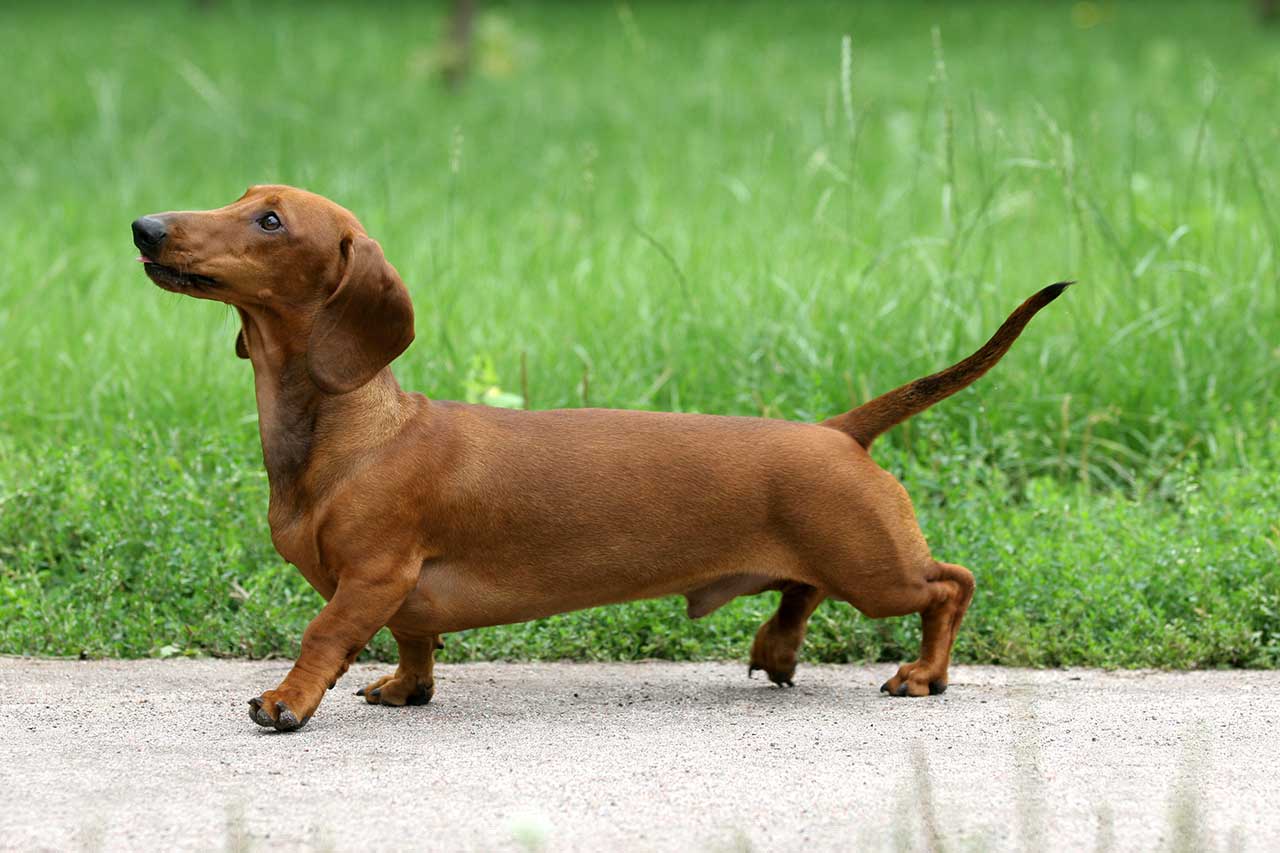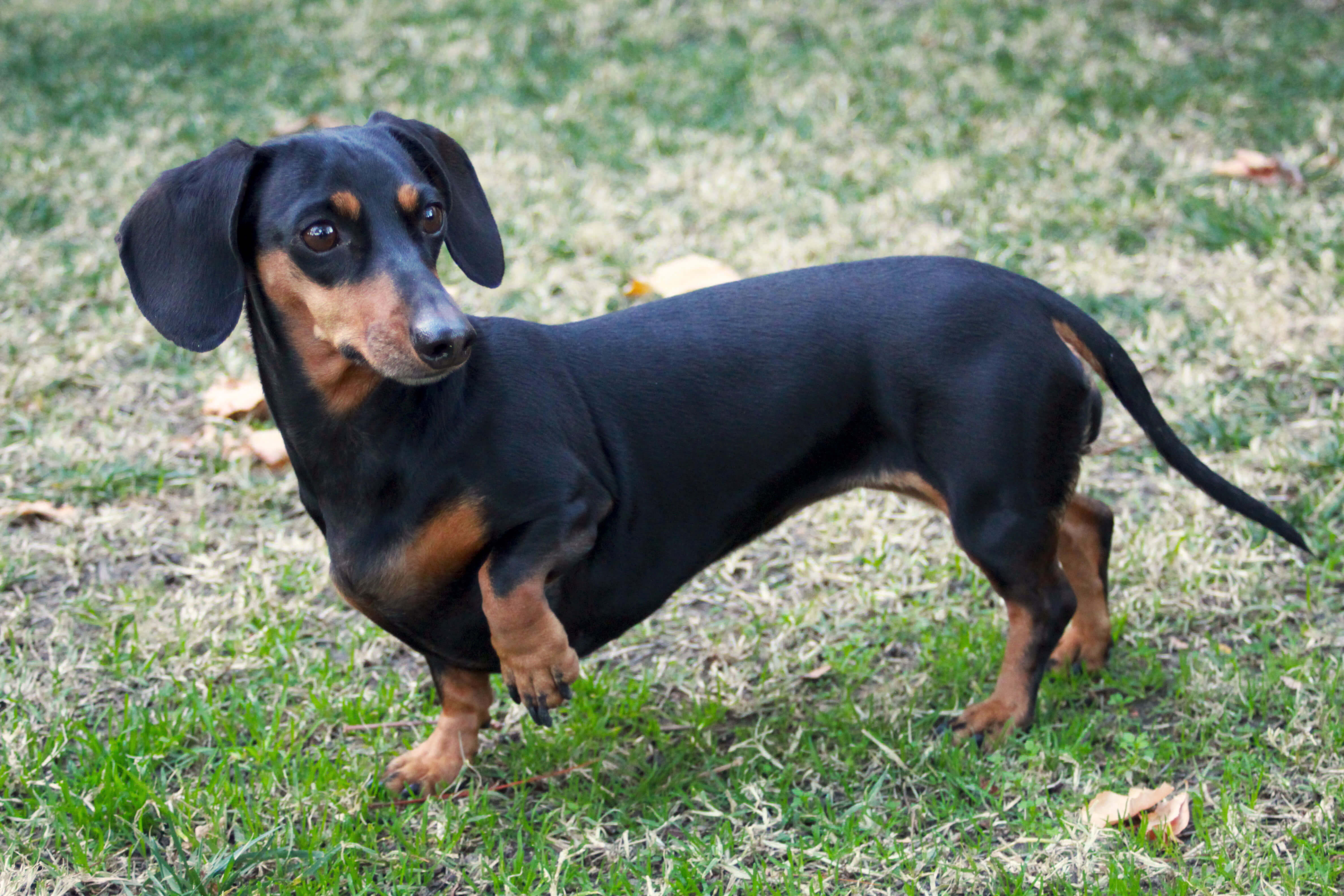Dachshund Back Legs Dragging - What To Know
Seeing your dear dachshund struggle with their back legs, maybe even dragging them, can feel like a sudden jolt, a really unsettling moment for any pet parent. It is, in a way, a situation that brings a lot of worry and questions. This kind of problem, where a dachshund's back legs are not working quite right, often points to something serious happening with their spine or general well-being. Knowing what might be going on and what steps you can take is, in some respects, truly important for your little companion's comfort and long-term health.
Dachshunds, those spirited little dogs, are known for their unique shape, their rather long bodies and those charmingly short legs. While this build makes them quite distinct and lovable, it also means they have a particular body structure that can, unfortunately, make them more prone to certain kinds of health concerns, especially those affecting their back. When you notice signs like a dachshund back legs dragging, it’s a clear signal that something needs your close attention, perhaps even a trip to see someone who can help with animal health.
This article will go into what might cause a dachshund to experience issues with their back legs, what you can do to help, and when it is best to get professional advice. We will, of course, also touch upon what makes these badger dogs so special and how their history plays a part in their health. Understanding these things can, you know, make a big difference in how you support your beloved pet through such a challenging time.
- Where To Get Thanksgiving Turkey
- Shows Similar To Abbott Elementary
- Guest Stars On Chicago Pd
- Elvis Christmas Special 2024
- Fox Towers Movies
Table of Contents
- What Makes Dachshunds So Special?
- Why Might a Dachshund's Back Legs Be Dragging?
- What Steps Can You Take If Your Dachshund's Back Legs Are Dragging?
- Understanding IVDD and Dachshund Back Legs Dragging
- How Can You Help Prevent Dachshund Back Legs Dragging?
- Daily Care for a Dachshund with Back Leg Issues
- When Should You Seek Professional Help for Dachshund Back Legs Dragging?
- Living Happily with a Dachshund Who Has Back Leg Concerns
What Makes Dachshunds So Special?
Dachshunds, often called "wiener dogs" or "sausage dogs" because of their long shape, are truly unique members of the canine family. They are, you know, quite energetic and very lovable small dogs. Their physical characteristics, like those short legs and varied coat textures, make them instantly recognizable. Originally, these dogs were bred in Germany, basically for hunting. Their name itself, "dachshund," means "badger dog" in German, which tells you a lot about their first purpose.
These little hunters have a history rooted in pursuing badgers into their underground homes. They possess, in a way, a strong prey drive, which is a leftover from their days as working dogs. Their long bodies, short and sturdy legs, a tapered muzzle, and those big, soft ears give them a distinct look that is, arguably, one of the most famous among all dog breeds. They are, generally speaking, joyful and lively companions, making them a popular choice for many households.
The breed comes from a mix of hound and terrier ancestors, which contributes to their spirited personality and keen sense of smell. They are, too, quite smart and, in some respects, can be a little bit stubborn, which adds to their charm. When thinking about getting a dachshund, people often consider their temperament, their history, and the kind of care they need. They are truly, you know, a beloved breed around the globe, cherished for their spirited nature and their very distinctive appearance.
- Nelly Furtado Sex
- Period Sex Nude
- Gender Reveal Odeas
- Can You Believe We Dont Have A Jacuzzi
- Not Menendez
Why Might a Dachshund's Back Legs Be Dragging?
When a dachshund's back legs start to drag, it is, in fact, a very concerning sign that something is amiss. This issue is, quite often, linked to problems with their spinal column, which is a sensitive area for this particular breed. Because of their long backs and short legs, they are more susceptible to certain conditions that can affect their mobility. One of the most common reasons for a dachshund back legs dragging is a condition called Intervertebral Disc Disease, or IVDD for short.
IVDD involves the discs that sit between the bones of the spine. These discs act like little cushions, but sometimes they can bulge or even burst, pressing on the spinal cord. When this happens, it can cause a range of problems, from mild pain to a complete loss of feeling or movement in the back legs. It can, basically, be a sudden event or something that gets worse over time. Other less common reasons could include injuries, other neurological conditions, or even certain types of growths, but IVDD is, more or less, the primary suspect when a dachshund's back legs are dragging.
The severity of the issue can vary greatly. Sometimes, a dog might just seem a little wobbly or hesitant to jump. Other times, they might not be able to use their back legs at all. It is, very, very important to pay close attention to any changes in how your dachshund walks or moves. Early detection can, sometimes, make a real difference in how well they recover. Any sign of a dachshund back legs dragging should prompt a quick response.
What Steps Can You Take If Your Dachshund's Back Legs Are Dragging?
If you notice your dachshund's back legs dragging, the very first thing to do is to keep them as still as possible. Try to prevent them from jumping, running, or climbing stairs, as these actions could, you know, potentially make the situation worse. Gently move them to a comfortable, safe spot where they can rest. It is, basically, like a little bit of an emergency, so keeping calm is key for both you and your pet.
Next, it is, in fact, absolutely crucial to contact your animal health professional right away. Describe what you are seeing and how your dachshund is acting. They will be able to advise you on the best course of action, which will, typically, involve bringing your pet in for an examination. Do not, under any circumstances, try to treat the problem yourself or give any medications without professional guidance, as this could, perhaps, cause more harm than good.
During the visit, the animal health professional will do a thorough check-up, which might include feeling your dachshund's back, checking their reflexes, and possibly suggesting imaging tests like X-rays or an MRI. These tests help them see what is happening inside and figure out the exact cause of the dachshund back legs dragging. The sooner you get them checked, the better the chances are for a good outcome, so, you know, time really matters here.
Understanding IVDD and Dachshund Back Legs Dragging
Intervertebral Disc Disease, or IVDD, is a condition that, in a way, is particularly common in dachshunds. Their long spines and relatively short rib cages mean that the discs between their vertebrae are under a good deal of pressure. These discs, which are sort of like jelly-filled donuts, cushion the spine and allow for flexible movement. When a disc degenerates, it can lose its elasticity and become brittle, making it more likely to bulge or rupture.
When a disc ruptures, the soft material inside can press on the spinal cord, causing pain, weakness, and, as we've discussed, a dachshund back legs dragging. The severity of the symptoms depends on how much pressure is on the spinal cord and where along the spine the problem is located. Some dogs might just show signs of pain, like crying out when touched or being reluctant to move. Others might have trouble coordinating their back legs, leading to a wobbly walk or a complete inability to use them.
IVDD is often classified by grades, from mild pain (Grade 1) to complete paralysis with no deep pain sensation (Grade 5). The treatment approach for a dachshund with IVDD can vary significantly based on the grade. Mild cases might respond to strict rest and pain medication, while more severe cases often require surgery to remove the pressure from the spinal cord. It's a condition that, in fact, needs careful management and, sometimes, a long recovery period.
How Can You Help Prevent Dachshund Back Legs Dragging?
While you cannot completely remove the risk of a dachshund back legs dragging, especially due to conditions like IVDD, there are, honestly, many things you can do to help lessen the chances. One of the most important aspects is managing your dachshund's weight. Keeping them at a healthy weight reduces the overall stress on their spine. Extra pounds mean more strain on those delicate discs, making them more likely to cause trouble.
Controlling their activity is also key. Try to prevent your dachshund from doing things that put a lot of stress on their back, like jumping off furniture or going up and down stairs too often. You can use ramps or steps to help them get onto beds or sofas, and carry them up and down stairs. This can, basically, help protect their spine from sudden impacts or twists. Regular, gentle exercise, like short walks, is good for keeping them fit, but avoid anything that involves high-impact movements or sudden turns.
Using a harness instead of a collar for walks can also be beneficial. A harness distributes pressure across their chest and shoulders, rather than putting strain on their neck and upper spine, which can, in a way, contribute to spinal issues. Also, consider the surfaces they walk on. Slippery floors can cause them to slip and slide, potentially leading to injuries. Rugs or non-slip mats can provide better grip and help prevent accidental falls that might, you know, injure their back.
Daily Care for a Dachshund with Back Leg Issues
For a dachshund already experiencing issues with their back legs, or recovering from a spinal problem, daily care becomes, actually, even more important. Providing a comfortable and safe environment is, you know, paramount. This means ensuring they have a soft, supportive bed that is easy for them to get into and out of. If they are having trouble moving around, you might need to help them change positions regularly to prevent pressure sores.
Mobility aids can be a huge help. Things like slings or special carts (wheelchairs for dogs) can allow them to move around and get some exercise, even if their back legs are not working properly. These aids can, in fact, give them a lot of freedom and improve their quality of life. It is also important to keep an eye on their bladder and bowel movements, as spinal issues can sometimes affect these functions. You might need to assist them with going to the bathroom, or learn how to express their bladder if they cannot do it on their own.
Physical therapy, under the guidance of a professional, can also be very beneficial. This might include gentle exercises, massage, or even hydrotherapy (water therapy) to help build muscle strength and improve coordination without putting too much strain on the spine. It is, in a way, a long-term commitment, but the improvements can be truly rewarding. Regular check-ups with your animal health professional are also vital to monitor their progress and adjust their care plan as needed for a dachshund back legs dragging situation.
When Should You Seek Professional Help for Dachshund Back Legs Dragging?
If you notice any signs of your dachshund's back legs dragging, or any changes in their ability to move their back half, it is, basically, time to seek professional help immediately. This is not something to wait on, as early intervention can, often, lead to better outcomes. Even if the symptoms seem mild at first, like just a slight wobble or a reluctance to jump, it is still important to get it checked out quickly.
More serious signs that require immediate attention include sudden weakness or paralysis in the back legs, your dachshund crying out in pain, a hunched back, or any difficulty with urinating or defecating. These can be indicators of a severe spinal cord compression that needs urgent care. Remember, a dachshund back legs dragging is a symptom, not a condition in itself, and finding the underlying cause is, quite frankly, essential for proper treatment.
Do not try to diagnose the problem yourself using information from the internet, as tempting as that might be. The structure of a dachshund's spine is, truly, very delicate, and missteps can have serious consequences. A qualified animal health professional will be able to perform the necessary tests to pinpoint the issue and recommend the most appropriate course of action, whether that is rest, medication, physical therapy, or, in some cases, surgery. So, you know, when in doubt, always call your animal care provider.
Living Happily with a Dachshund Who Has Back Leg Concerns
Caring for a dachshund who has experienced issues with their back legs, or who is prone to them, means making some adjustments to your daily life together. It is, in a way, about adapting and ensuring their comfort and happiness. These dogs are, after all, known for being joyful and energetic, and even with mobility challenges, they can still lead very full and happy lives with the right support. It is, too, about understanding their specific needs and providing a loving environment that caters to them.
This might mean creating a home environment that is more spine-friendly. Think about adding soft rugs on slippery floors, using pet stairs or ramps for furniture, and making sure their resting spots are easily accessible and supportive. It also means being mindful of how you pick them up, always supporting their long back and hindquarters to avoid putting strain on their spine. This can, literally, prevent future problems or help with recovery if they have had an issue with a dachshund back legs dragging.
The emotional aspect of caring for a dog with mobility issues is also important. They still need mental stimulation, love, and attention. Playtime might look a little different, perhaps involving more gentle games or puzzle toys instead of vigorous running. Regular, gentle interaction and reassurance can help them feel secure and cherished, even if their physical abilities are limited. With dedication and care, your dachshund can, very, very much continue to be a wonderful, spirited companion, regardless of their back leg concerns.
To sum things up, understanding why a dachshund's back legs might be dragging, knowing the steps to take, and focusing on prevention and careful daily attention can make a world of difference for these special dogs. Their unique body shape makes them prone to certain spinal issues, but with proactive care, a supportive home environment, and quick action when problems arise, you can help your beloved dachshund live a comfortable and joyful life. It is, after all, about giving them the best possible care, just like they give us so much happiness.

About The Breed: Dachshund - Highland Canine: Professional Dog Training

Dachshund Dog Breed » Information, Pictures, & More

Dachshund Dog Breed » Information, Pictures, & More